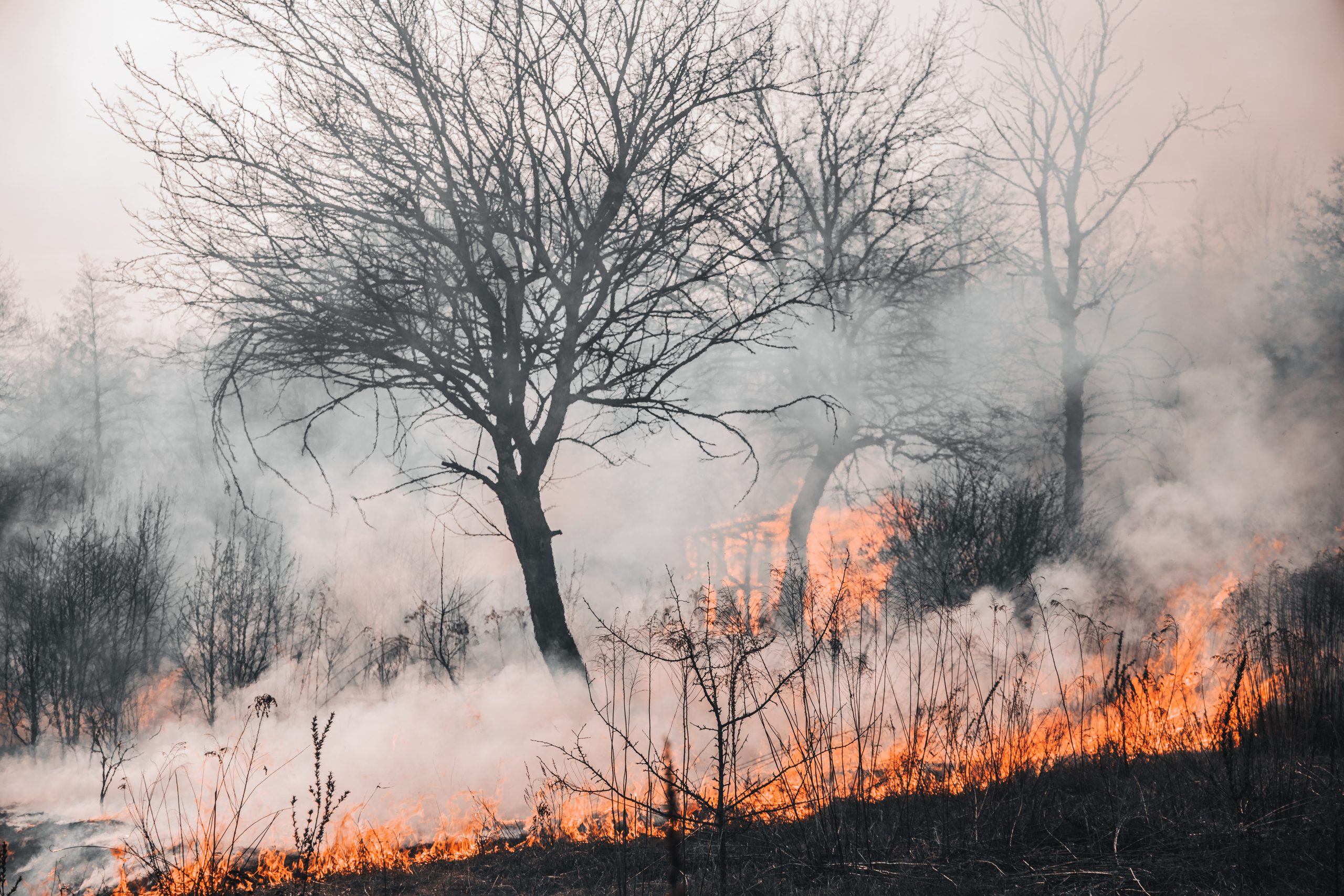Some information may be outdated.
This is the second in a two-part series on the science of fire, brought to you by Science Moab’s partners at Utah Tech University and the Southern Utah Science Cafe. This discussion was captured live early in 2022 in St. George and pertains to the impacts of wildfires on the land and its inhabitants. Panel members were Greg Melton (Utah Tech University Department of Earth, Energy, and Environmental Science), Mike Schijf (Biologist, Washington County Habitat Conservation Plan), and Jason Whipple (Director, Washington County Emergency Services).
Science Cafe: How does the use of fire retardant affect local ecology?
Jason Whipple: When we go fight fires, there’s a planning team that includes folks who are there to look after natural resources. Part of that is asking if we put retardant down, what it is going to affect? Most of the time, that’s going to be waterways, because retardant is not good for aquatic life. So unless it was an extreme life-saving action, then they’re going to keep it out of the waterways.
Science Cafe: Sometimes a pile of smoldering embers sparks back up when it’s kicked or disturbed. What causes that?
Whipple: There are a lot of steps to put a fire out. Once we get a perimeter established, we have an area called the black, which will hold fire in different stages, smoldering or flame, for a long time. When you have these larger fires, there’s no way to put water on everything that is on fire, so sometimes you just gotta watch it and let it go out on its own. But there are also incidences where fires last through the winter burning through root systems, and then pop up the next year. Fire’s a survivor. It’ll burn for as long as it has enough oxygen, fuel, and uninterrupted reaction time.
Greg Melton: Below the surface, the fire is insulated and that heat is still being trapped, it’s got the fuel. If you just limit the oxygen, you can slow the reaction but it’ll still burn. I’ve been on a fire where there’s been an accumulation of pine needles. At the surface, it was undisturbed, but we started hacking down and seven inches below the surface, it was burning.
Science Cafe: Are there any trends in the annual numbers of human-caused vs. natural fires?
Whipple: It kind of depends from year to year. After the pandemic started, we attracted a lot of people that decided to rent their houses out and get an RV and go see the world. They ended up here for a good portion of that time, which impacted how many people we had in our area. I think that contributed some to our fires. However, having that influx of people and the conditions that we had, we also put in fire restrictions earlier and stronger. So it reduced some of those fires that normally would have been caused by people. It was kind of a double-edged sword. But in other years we’ll see a drop in both. There are some years we’ve been ready to fight fire and ready for a big season and it just never came. The storms were just right, they had lightning but also water with them. Other years we got hammered with dry lightning.
Schijf: Generally speaking, there is definitely a concern with getting more people in this community. Statistically, it’s more likely that you’re gonna have more people out there playing with fireworks, flicking a cigarette butt out the window, et cetera. And so there is a worry that as we get more people in our community, we’ll get larger fires.
Science Cafe: Can you explain what coal seams are and why those lead to fires that have been going on for centuries?
Melton: Coal is an accumulation of plant material in a specific environment, something swampy, where there’s an accumulation of water and the water is oxygen-poor. All of this biomass is dying, and because of the low-oxygen environment, it doesn’t break down, and so you get this accumulation. Over time, it’s compressed and heated, and eventually the carbon molecules in that plant life start converting into these really long chain hydrocarbons, ligands, and things like that. That’s how you get coal. Once that gets ignited, there is the potential for them to burn for decades. We can’t access that fire, and it’s got the fuel. It’s sandwiched between rocks, and so stays nice and insulated, and can just go. Luckily, it doesn’t hurt too many people.
Science Cafe: What efforts are being taken to prevent the erosion and runoff that do put communities at risk for landslides post-fires?
Melton: There are a number of mitigation techniques, revegetation has got to be one of the biggest and the most effective for pretty obvious reasons. Also identifying areas at the greatest risk, and letting the public know about that.
Whipple: A lot of times when we start addressing that problem is when we actually know about that problem. So we have these floods, but we don’t know what’s gonna landslide and what’s not. So sometimes it’s a reaction, but if we suspect something like that’s gonna happen, the protection that we have is at the bottom, to either divert the flow down to the right spots, or divert the flow at the very bottom with stuff like riprap.
Science Moab is a nonprofit dedicated to engaging community members and visitors with the science happening in Southeast Utah and the Colorado Plateau. To learn more and listen to the rest of this interview, visit www.sciencemoab.org/radio. This interview has been edited for clarity.
Appreciate the coverage? Help keep local news alive.
Chip in to support the Moab Sun News.





